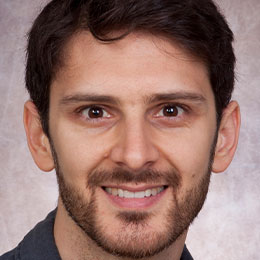
Gregory Antonarakis
PT
“Aparelhos funcionais na má oclusão de Classe II: tratamento e estabilidade”
Existe grande uma grande variedade no que diz respeito aos resultados após o tratamento funcional da má oclusão de Classe II. A adesão tem sido frequentemente referida como o fator decisivo para o sucesso ou fracasso do tratamento, com o ortodontista colocando a culpa na criança que não usa seu aparelho quando o resultado do tratamento não é favorável. Além do fator de adesão, entretanto, mesmo com o uso de aparelhos funcionais fixos, ainda existe variedade nos resultados do tratamento. Alguns estudos sugerem que a condição inicial dos músculos mastigatórios pode ser um dos fatores que influencia os resultados do tratamento com aparelhos funcionais. Entretanto, o tratamento bem-sucedido com aparelhos funcionais, nem sempre implica necessariamente em sucesso a longo prazo. A estabilidade pós-tratamento é, mais uma vez, variável entre os diferentes indivíduos. Os diferentes fatores que podem influenciar a estabilidade a longo prazo e a recidiva da má oclusão de Classe II serão discutidos com o foco na estabilidade sagital. A influência da escolha do tratamento e das características do paciente será discutida no que diz respeito à recidiva, bem como a influência das características funcionais de um indivíduo.
ENG
“Functional appliances in Class II malocclusion: treatment and stability”
Large variation exists with regards to outcomes following functional treatment of Class II malocclusion. Compliance has often been referred to as the decisive factor for treatment success or failure, with the orthodontist putting the blame on the child not wearing his/her appliance when treatment outcome is not favorable. Besides the factor of compliance however, even when using fixed functional appliances, variation in treatment outcomes still exists. Some studies suggest that the initial condition of the masticatory muscles may be one of the factors that influences functional appliance treatment outcomes. Successful functional appliance treatment, however, does not always necessarily imply long-term success. Post-treatment stability is once again variable between different individuals. The different factors that may influence long-term stability and relapse of the Class II malocclusion will be discussed with the focus being on sagittal stability. The influence of treatment choice and patient characteristics will be discussed with regard to relapse, as well as the influence of the functional characteristics of an individual.
Curriculum Vitae
PT
O Dr. Antonarakis completou sua graduação em odontologia na University of Wales em Cardiff, Reino Unido, e a sua formação de especialidade ortodôntica de quatro anos na University of Geneva, Suíça. Posteriormente, recebeu seu PhD da Universidade de Gothenburg, na Suécia e, em seguida, realizou uma formação clínica em ortodontia de fissurados e craniofacial no Hospital for Sick Children em Toronto, Canadá. O Dr. Antonarakis então retornou à Universidade de Genebra, na Suíça, onde concluiu sua habilitação na Divisão de Ortodontia e recentemente foi nomeado professor associado. Seus interesses clínicos e de pesquisa incluem ortodontia de fissurados e malformações craniofaciais, tratamento de pacientes com artrite idiopática juvenil, bem como ortodontia para portadores de necessidades especiais.
ENG
Dr Antonarakis completed his degree in dentistry at the University of Wales in Cardiff, UK, and his four-year orthodontic specialty training at the University of Geneva, Switzerland. He subsequently received his PhD from the University of Gothenburg, Sweden, and then undertook clinical fellowship training in cleft and craniofacial orthodontics at the Hospital for Sick Children in Toronto, Canada. Dr Antonarakis then returned to the University of Geneva, Switzerland where he first completed his habilitation at the Division of orthodontics and has recently been appointed associate professor. His clinical and research interests include cleft and craniofacial orthodontics, treatment of patients with juvenile idiopathic arthritis, as well as orthodontics for individuals with special needs.

